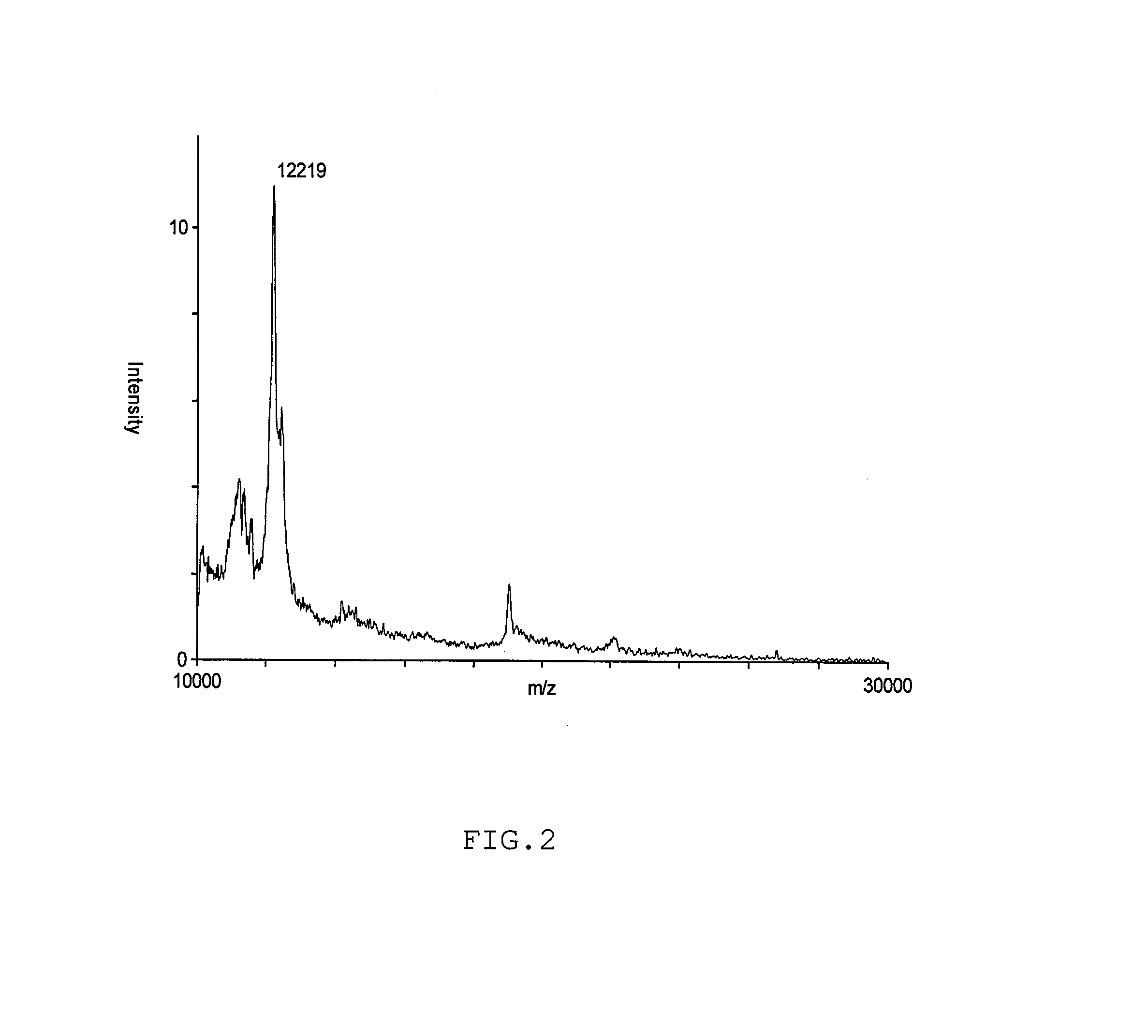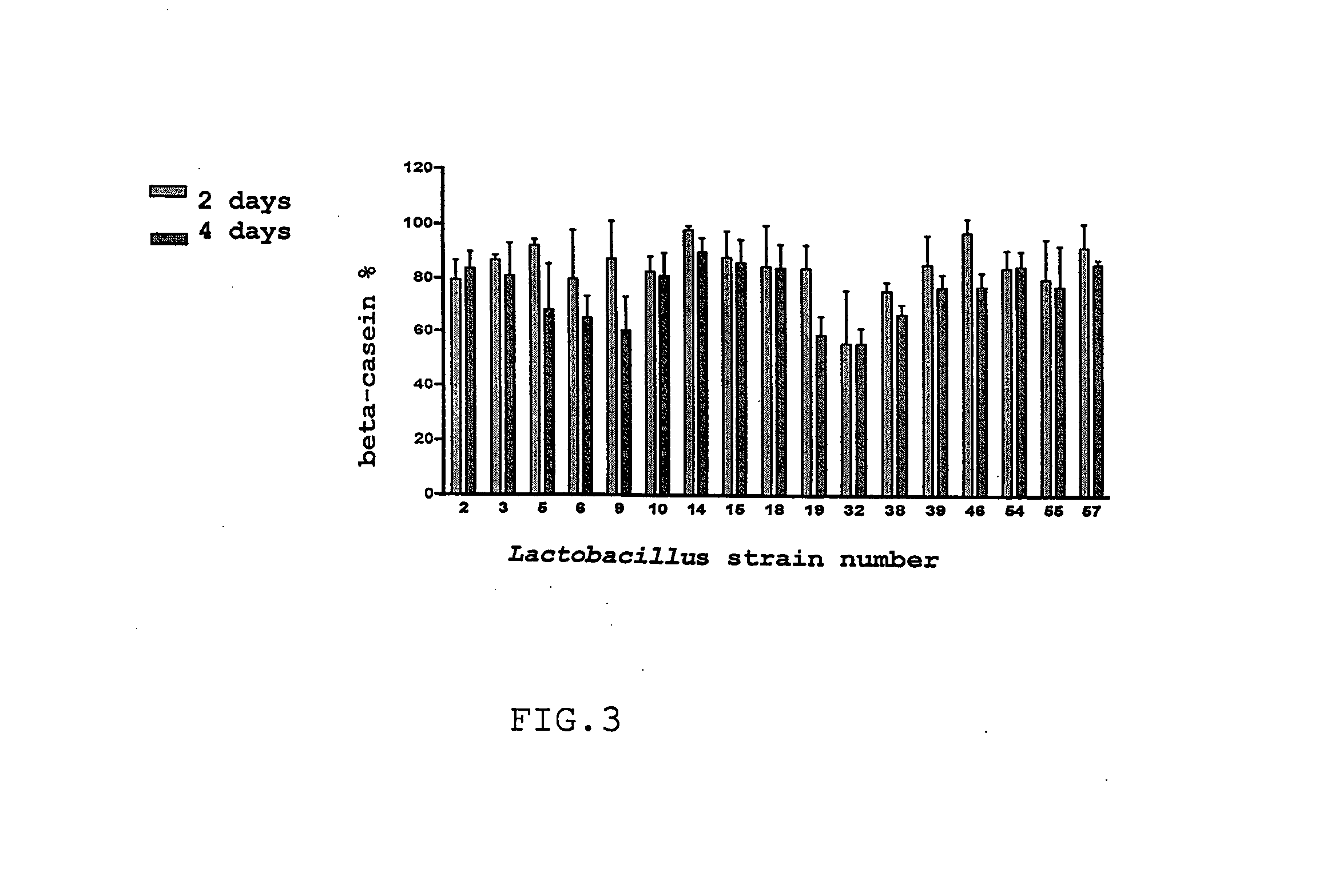Isolated microorganism strains Lactobacillus plantarum MCC1 DSM 23881 and Lactobacillus gasseri MCC2 DSM 23882 and their use
a technology of lactobacillus and lactobacillus gasseri, which is applied in the field of biotechnology, can solve the problems of severe organoleptic unsatisfactory products, achieve the effects of reducing the amount of -s1 casein and/or -casein, improving the and improving the effect of proteolytic efficacy and proteolytic activity
- Summary
- Abstract
- Description
- Claims
- Application Information
AI Technical Summary
Benefits of technology
Problems solved by technology
Method used
Image
Examples
example 1
[0077]Method for production of milk allergy responses and urinary tract irritation symptoms and associated oxidative stress and inflammation reducing food product and dietary supplement with abovementioned healthy properties, containing microorganisms L. plantarum MCC1 or L. gasseri MCC2 or their combination.
[0078]Below is presented the preferable embodiment.
[0079]For the production of food product and / or dietary supplement reducing milk allergy responses and urinary tract complaints microbial cultures were used that were pre-grown in fermenter during 24 h and then lyophilized.
[0080]For the production of food product the lyophilized microbial cultures L. plantarum MCC1 and / or L. gasseri MCC2 were activated in small amount of warm (at least 20° C.) whey, milk or solution made from milk powder / milk protein concentrate or other milk protein source for at least 4 hours.
[0081]Method for production of food product or dietary supplement with healthy properties included the next stages (see...
example 2
Additives for Production of Milk Allergy Responses and Urinary Tract Irritation Symptoms and Associated Oxidative Stress and Inflammation Reducing Food Product and Dietary Supplement Containing Microorganisms L. plantarum MCC1 or L. gasseri MCC2 or their Combination.
[0092]As product additives sea-buckthorn juice (BT) (made from sea-buckthorn berries, without preservatives, cold-pressed and pasteurized), raspberry-blueberry concentrated juice drink (composition: concentrated raspberry-blueberry juice (RB), sugar, acidity regulator citric acid, preservative potassium sorbate, was diluted 10 times), cowberry concentrated juice drink (C) and blueberry concentrate (B) (see Table 10) were used. Antioxidancy (TAA and DPPH tests) and contents of bioelements with atom absorption spectrophotometric (AAS) method Spektra AAFS and 220Z were determined for the additives. (Varian, Australia), Cu, Zn, Fe, Mn contents were determined with AAS flame method, K content with emission method in air-acety...
example 3
Clinical Trial No. 1
Safety and Beneficial Effects of the Products, Biochemical-Clinical and Organoleptic Tests.
[0093]With the use of multipotent strains obtained by versatile bioselection and additives and application of suitable technological scheme (see example 1) food products FP-I (MCC1+L. gasseri MCC2, BT) and FP-II (MCC1, RB) were obtained. Subsequently clinical trials (in accordance to Declaration of Helsinki of the World Medical Association, approved by the Tartu University Ethics Review Committee) were performed to clarify the safety and healthy effects of food products FP-I and FP-II.
[0094]The main scheme of the clinical trial was the following: 25 volunteers (11 women, 14 men), 40-65 years old, were randomly assigned to two groups on the basis of the next study inclusion criteria: persons without clinical problems, chronic diseases, special diets, use of vitamins, mineral preparations, the participants do not have to change their physical activity, usual alcohol use, smok...
PUM
| Property | Measurement | Unit |
|---|---|---|
| Temperature | aaaaa | aaaaa |
| Percent by volume | aaaaa | aaaaa |
| Percent by volume | aaaaa | aaaaa |
Abstract
Description
Claims
Application Information
 Login to View More
Login to View More - R&D
- Intellectual Property
- Life Sciences
- Materials
- Tech Scout
- Unparalleled Data Quality
- Higher Quality Content
- 60% Fewer Hallucinations
Browse by: Latest US Patents, China's latest patents, Technical Efficacy Thesaurus, Application Domain, Technology Topic, Popular Technical Reports.
© 2025 PatSnap. All rights reserved.Legal|Privacy policy|Modern Slavery Act Transparency Statement|Sitemap|About US| Contact US: help@patsnap.com



